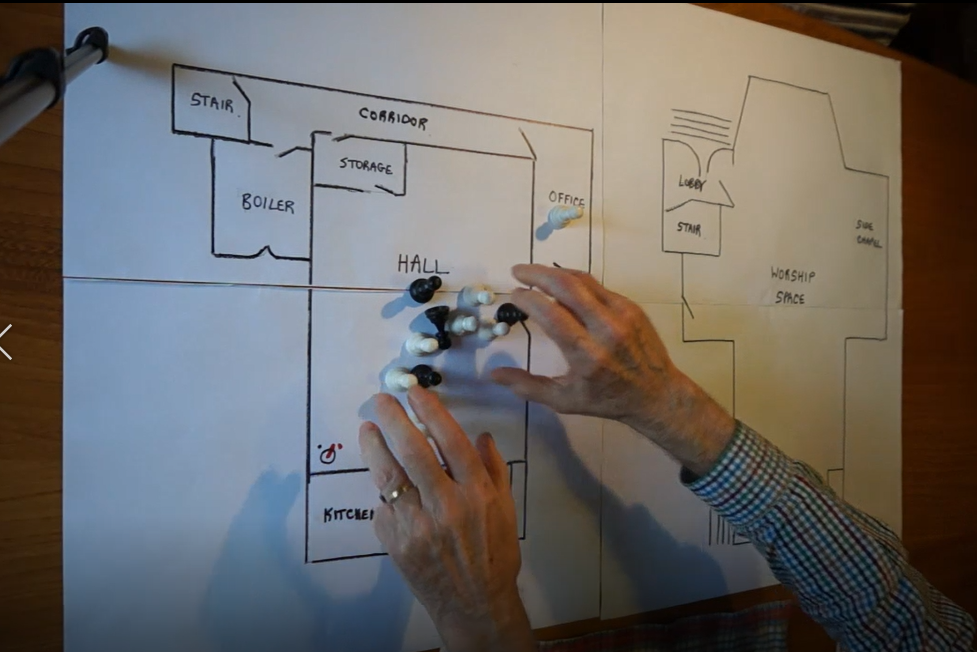Board Game#
We use a “board game” to have the group tell each other stories about the building that help them understand how it is used. It is played twice.
To play it, you need a rough floor plan of the building large enough for everyone to see and some game pieces - maybe chess pieces, paper clips, or coins. Start at the beginning of the week and using the diary, use the game pieces to move people through the building. Stop at each change to ask the game questions.
At the end, go around the room for each person to suggest one thing they’ll take away from the game. You can allow some discussion and record what they say on a flip-chart or projected document and allow some discussion.

Game Instruction Video - but split the game in two as described below
The first time the game is played, it’s to tell a simple story about what happens in their buildings over the course a week. This paints a picture for the group and since full occupancy is always better, helps them think about why unoccupied spaces aren’t used.
Game questions: Are these spaces the right size? Who might want to use the empty spaces? What changes would we need to make them suitable?
The second time, the engineer will have temperature data from the building, and the game is about what the heating is like for the building’s users. Most groups are very surprised when they find out what’s happening with the heating. This part of the programme can lead to fast fuel savings from an investment of a few hundred pounds.
Game questions: Are these people comfortable? What do they do if they are too hot or too cold? Is there some change that would make them comfortable with less waste?
The challenge for the group leader is to keep the group on track. Most people aren’t used to imagining what the experiences of other people are like. Groups might try to short-cut the game and assume they know what the outcome will be, and then miss members telling them about space heaters, draughts, open doors, or community needs they know exist. Be firm at the beginning of the game about telling the story by going through the diary. Your position of leadership will make them follow.
The challenge for the engineer the second time the tame is played is being able to read the thermal monitoring data quickly enough to comment on thermal comfort. This is easiest if they have diary access ahead and the time to look at the data for a typical week, marking up when the users are in.
Group members often fail to be imaginative and ambitious about building changes, sometimes for fear of what others will think. In our experience communities are less conservative than their individual members think! The engineer can help the group leader by asking “what if” questions about the unused spaces and reminding the group about heating the air versus heating the people and the possibility of doing a bit of both.
Game tips
The floorplan can be simple and sketchy. This helps the group be playful. If you bring paper, scissors, and marker pens, you can ask group members to add features and make props as you go along that help you tell the story.
It helps to write the questions large where people can see them.
